Jus started your birding journey? Here's a list of some commonly found birds and tips on how to identify them.
We introduced some common birds in Part I, so here's another list to learn some more because there’s no other joy than enjoying the melodious chirping of birds, instead of the irritating honking and traffic noises around us. It feels good for a change. There are unlimited species of birds around us, yet we tend to ignore them. Here’s a guide of some that you may actually get a chance to identify from the comfort of your homes!
Indian Pond Heron
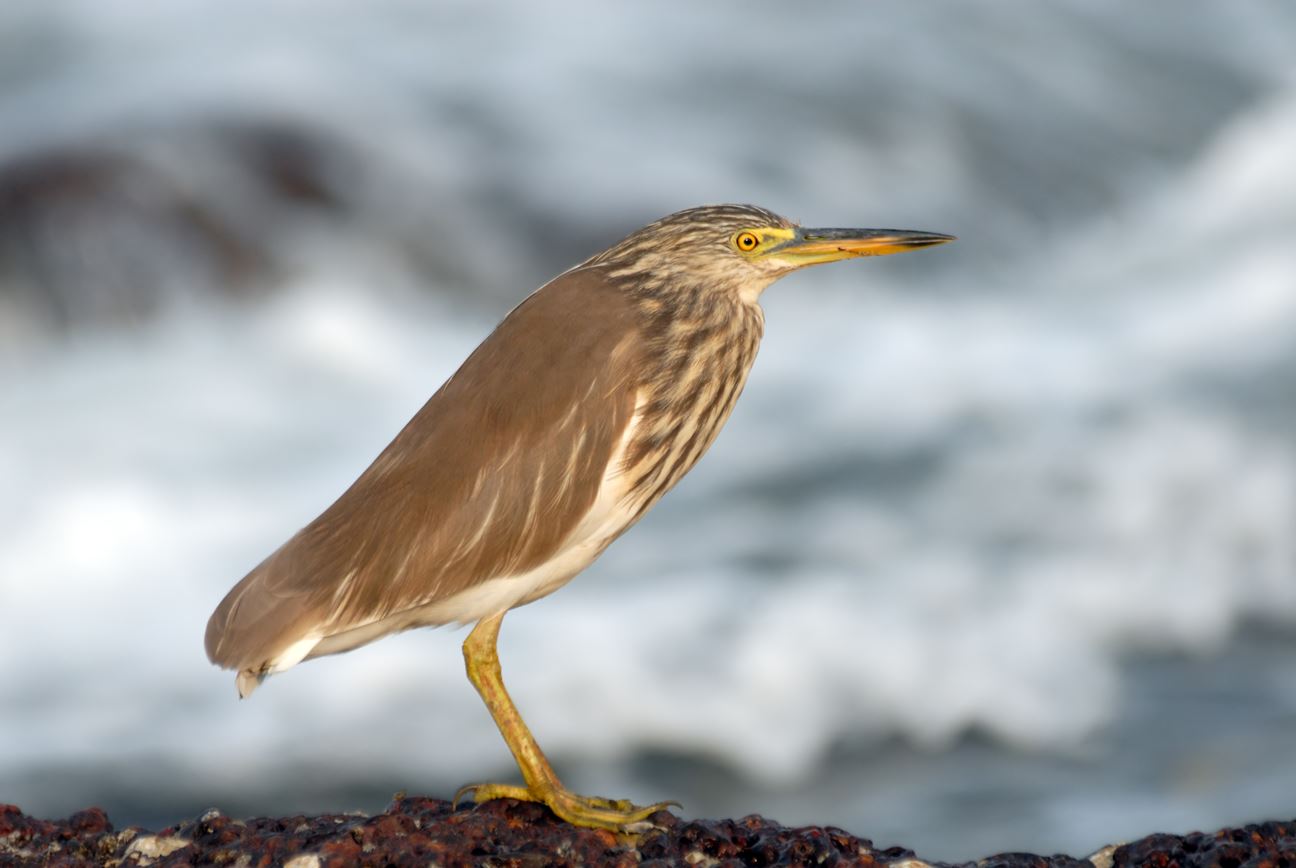
These birds are very commonly found feeding on fish and floating vegetation, near fields or water bodies. They have a yellow-brownish head and neck, maroon back, and white wings. Both male and female look alike. They’re generally solitary but travel in large groups if food is abundant in a particular area.
Cattle Egret
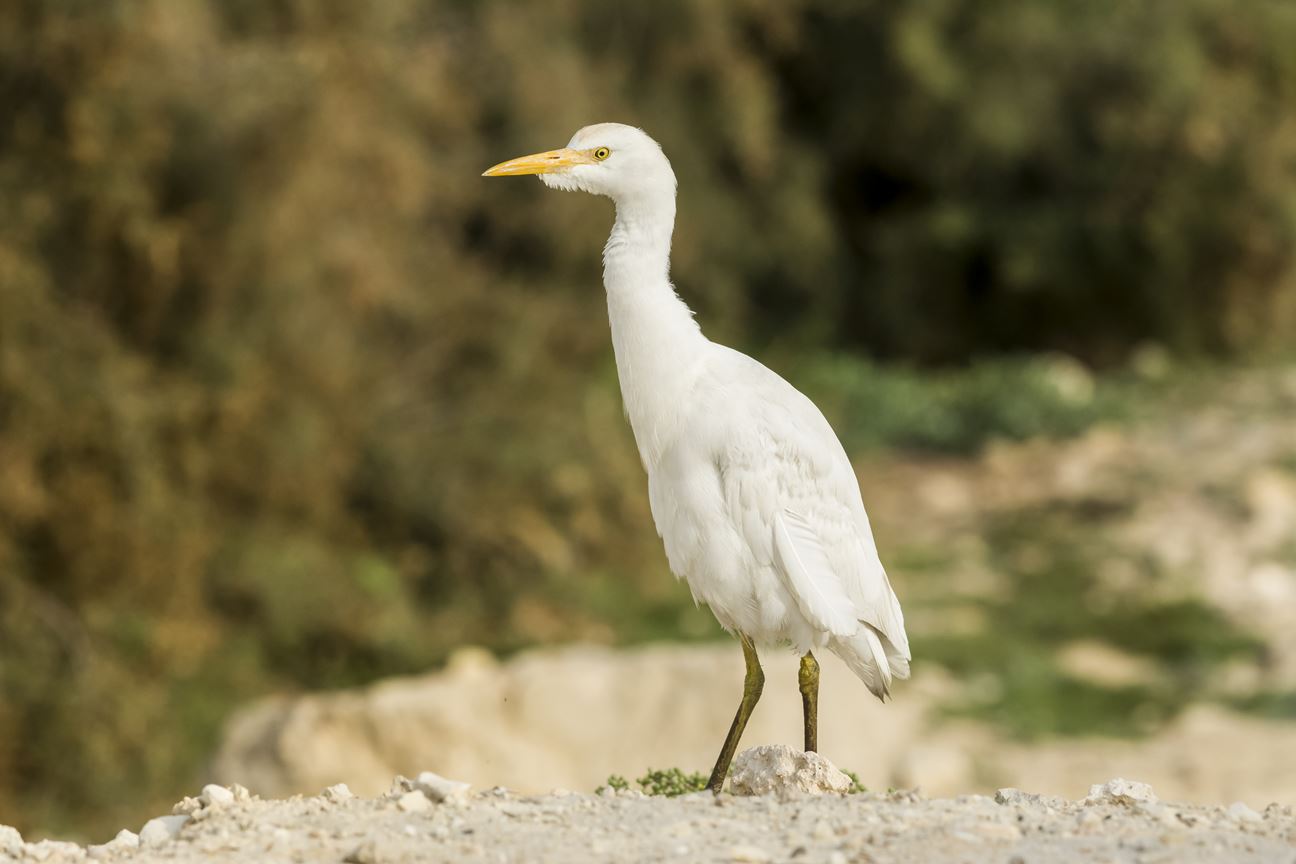
These birds can be easily spotted, happily eating insects off cattle and other grazers. They can be identified by their white bodies, short yellow beaks, and greenish or blackish legs. Their head, neck, and back may show a buff orange plumage during breeding months. Also, both the male and the female look alike. Juveniles have a darker bill and legs. These birds nest on trees and can be seen moving in small flocks. Though their habitat isn’t water-dependent, they’re mostly seen around swamps, grasslands, and wet fields.
Scaly Breasted Munia
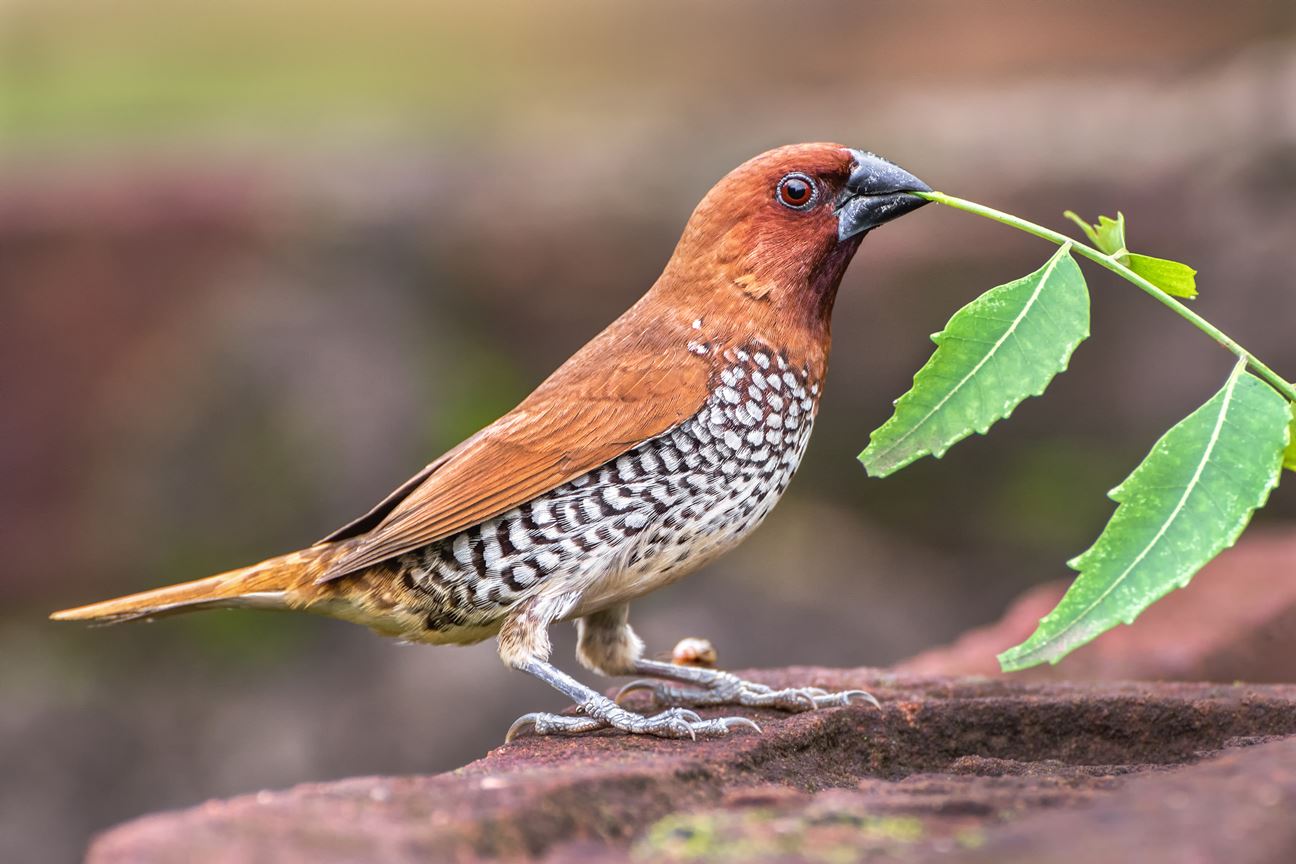
These sparrow-sized birds, also known as Spotted Munia, are characterised by their brown head and upperparts with white-spotted underparts. Juveniles have a plain brown body with paler underparts. They have short beaks that help them eat grass seeds and build nests. They are commonly seen foraging for berries, seeds, and insects in flocks.
Little Cormorant
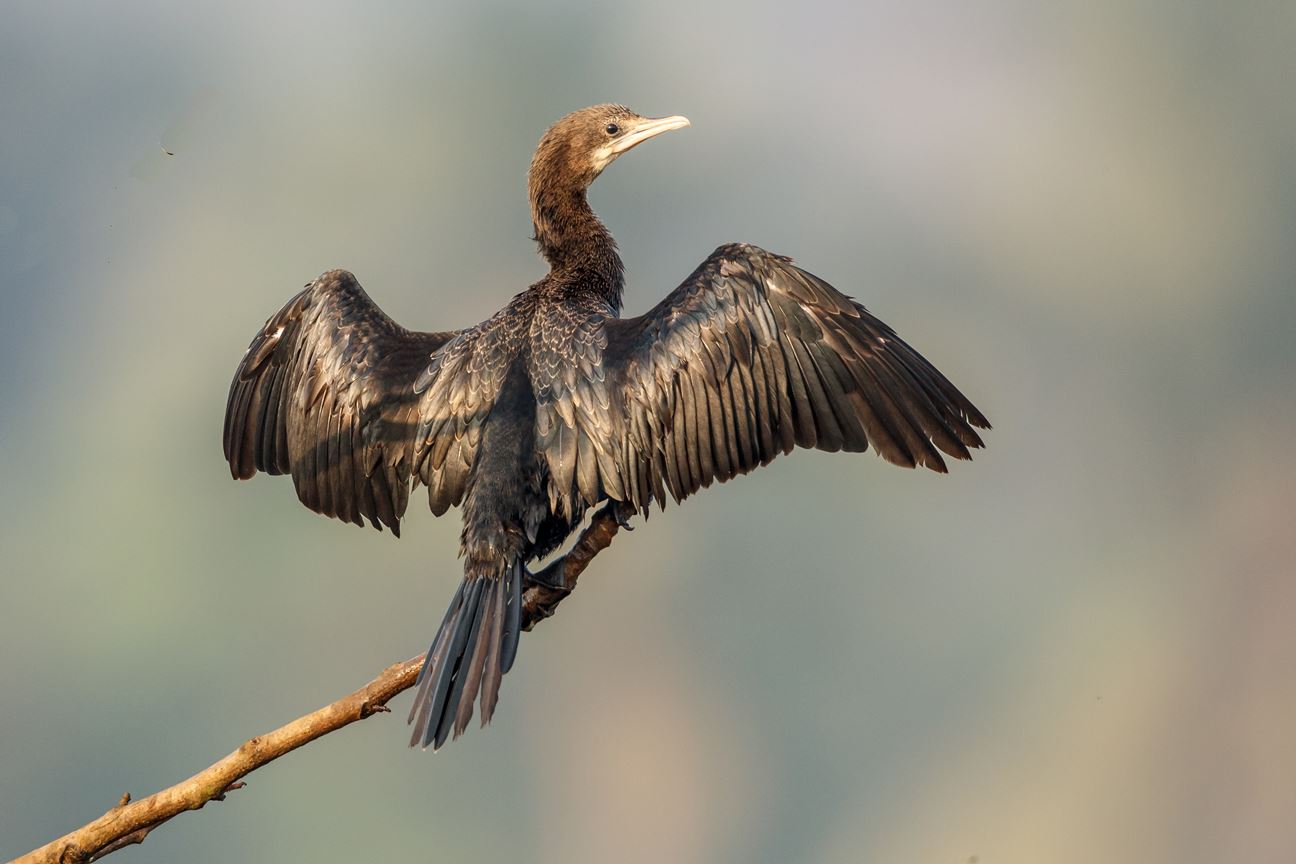
Ever wondered what those blackbirds that sit on the riverbanks, spreading their wings, are? They are Cormorants sitting there to dry their wings. They’re characterised by long necks and webbed feet. Both males and females look alike with a brownish-black colour in non-breeding birds whereas a black shiny in breeding plumage. They’re excellent divers and have poorly developed oil glands to aid them in going deep underwater.
Greater Coucal
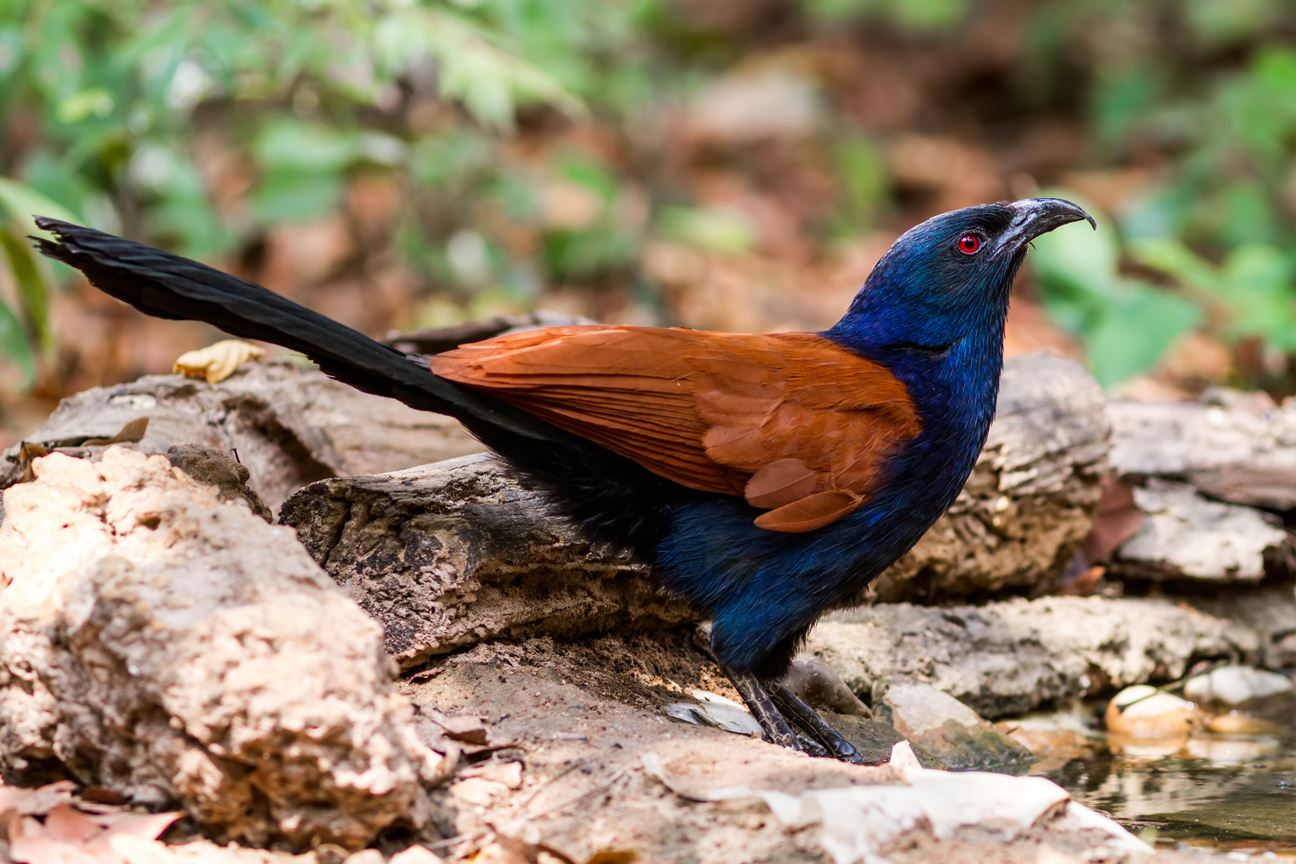
These large birds can be identified by their chestnut-brown wings, long black-blue tail, and bright red eyes. They are mostly found hunting and feeding on the ground as they aren’t great fliers. They hide in thick vegetation mostly, but their loud calls give away their location. They feed on insects, seeds, and fruits. Although they belong to the Cuckoo family, they’re non-parasitic and raise their own offsprings.
Purple Sunbird
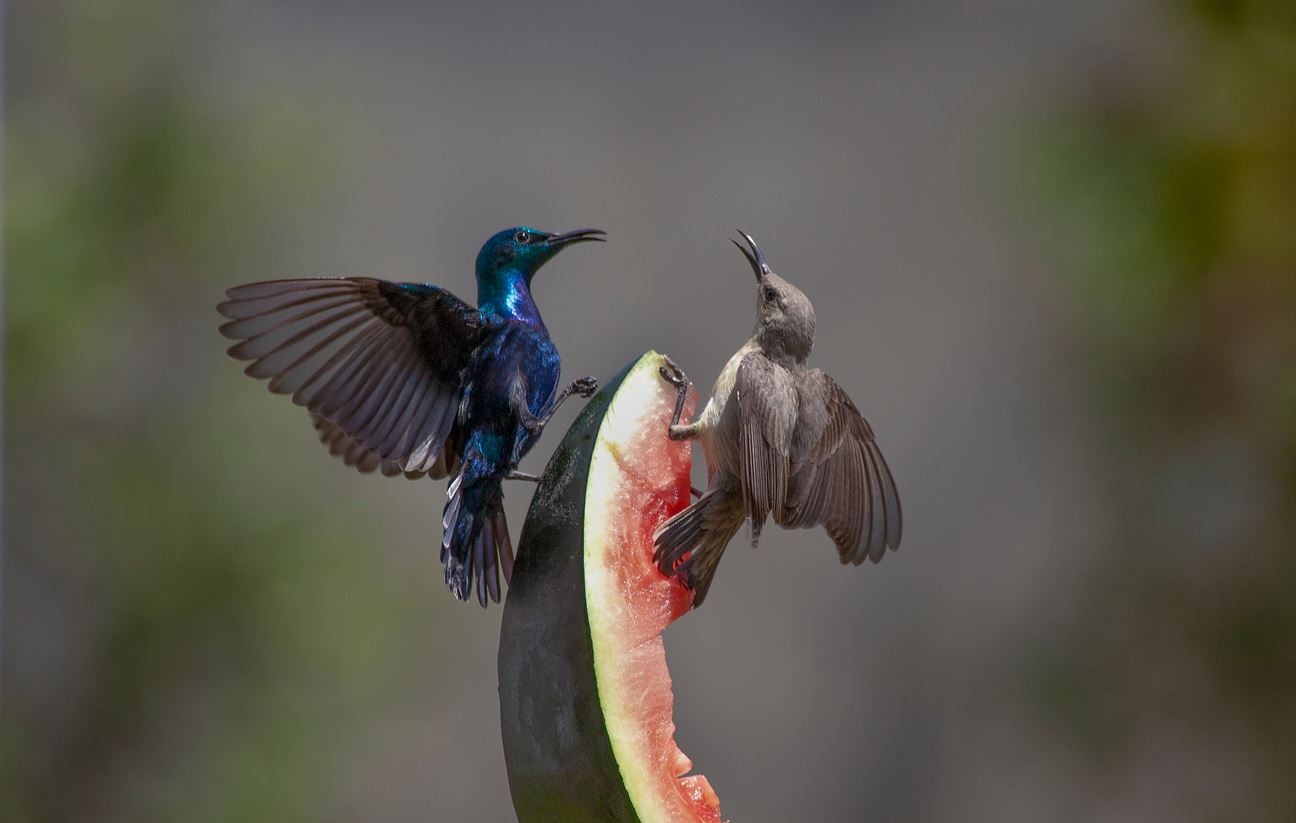
The breeding males with their purplish-black glossy plumage can be easily spotted in our gardens. The females are duller, with an olive-grey above and yellow-greyish underparts. Non-breeding males look similar, but with a dark blue throat band. These tiny birdies can be seen feeding on nectar or insects, generally in pairs.
Laughing Dove
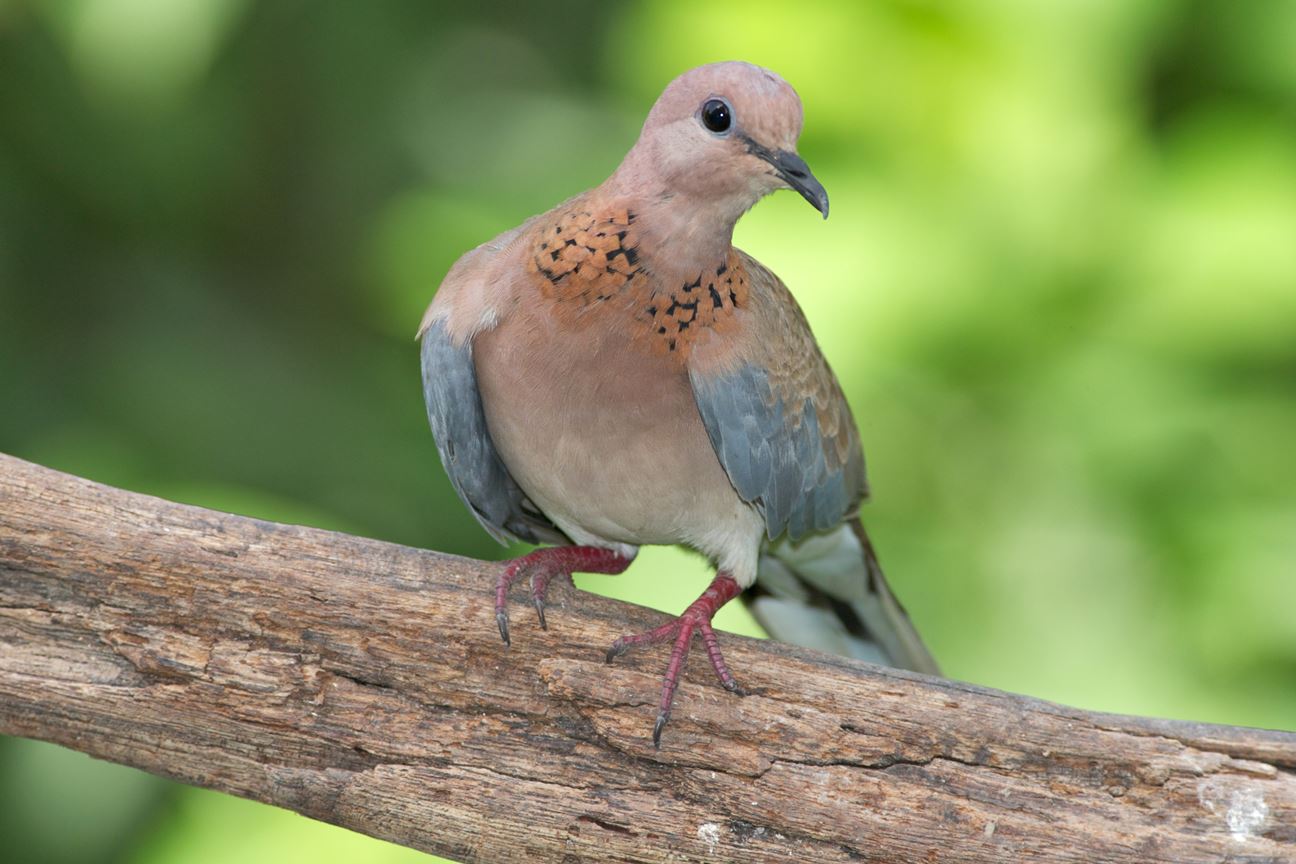
These doves can be identified by their pastel brown and pink bodies, spotted black collars, blue-grey wings, and long tails which have white tips and a grey centre. These doves are commonly seen in dry scrubs and arid regions, feeding on grains and seeds. They gather together on the ground when they find abundant food. Their call is a repetitive ‘coo-coo-coo-ru’ which sounds like a chuckling human!
Ashy Prinia
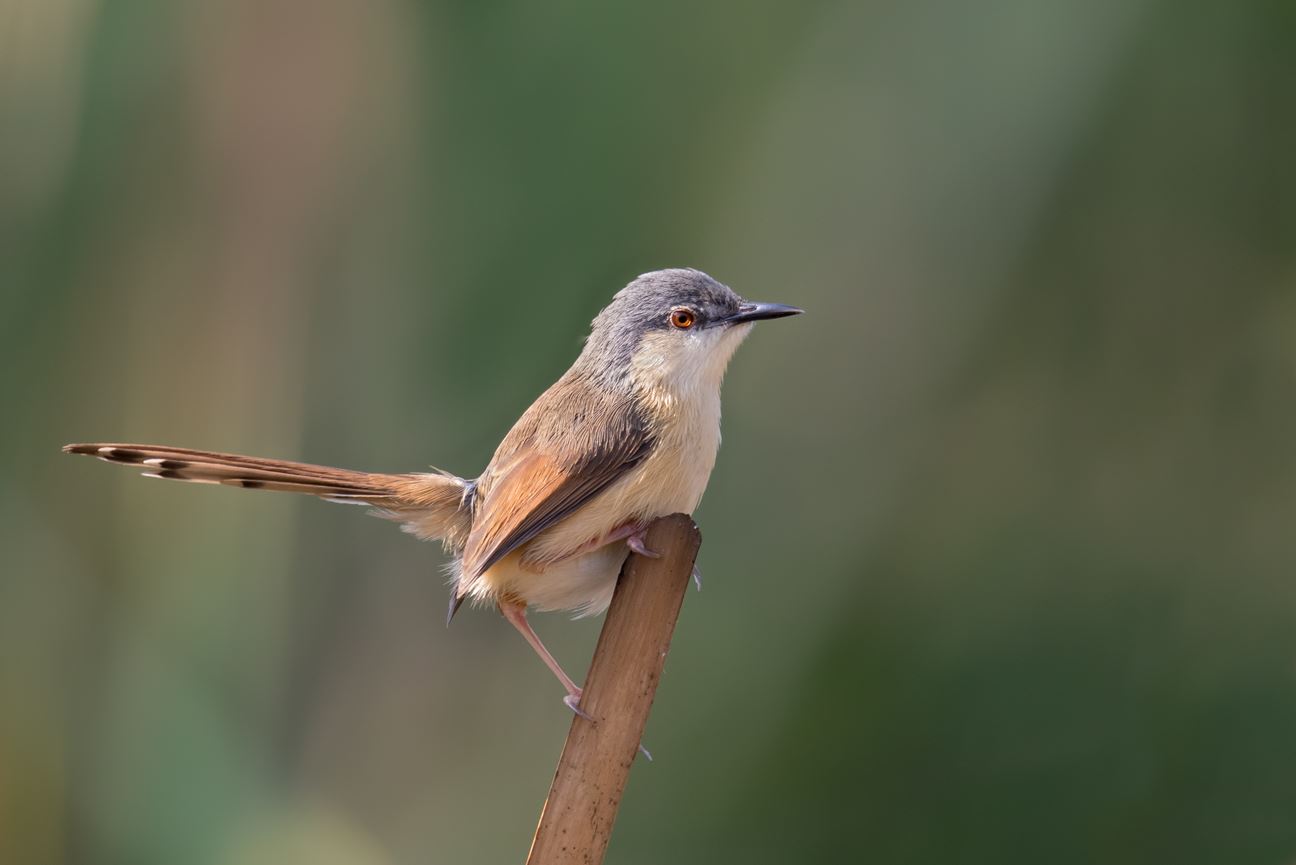
This small warbler bird can be identified because of its small size and long upright tail. It has a grey head, greyish-brown back, pale cinnamon underparts, and a black bill. It is also known for its fearless behaviour and loud chirping and songs.
Indian Grey Hornbill
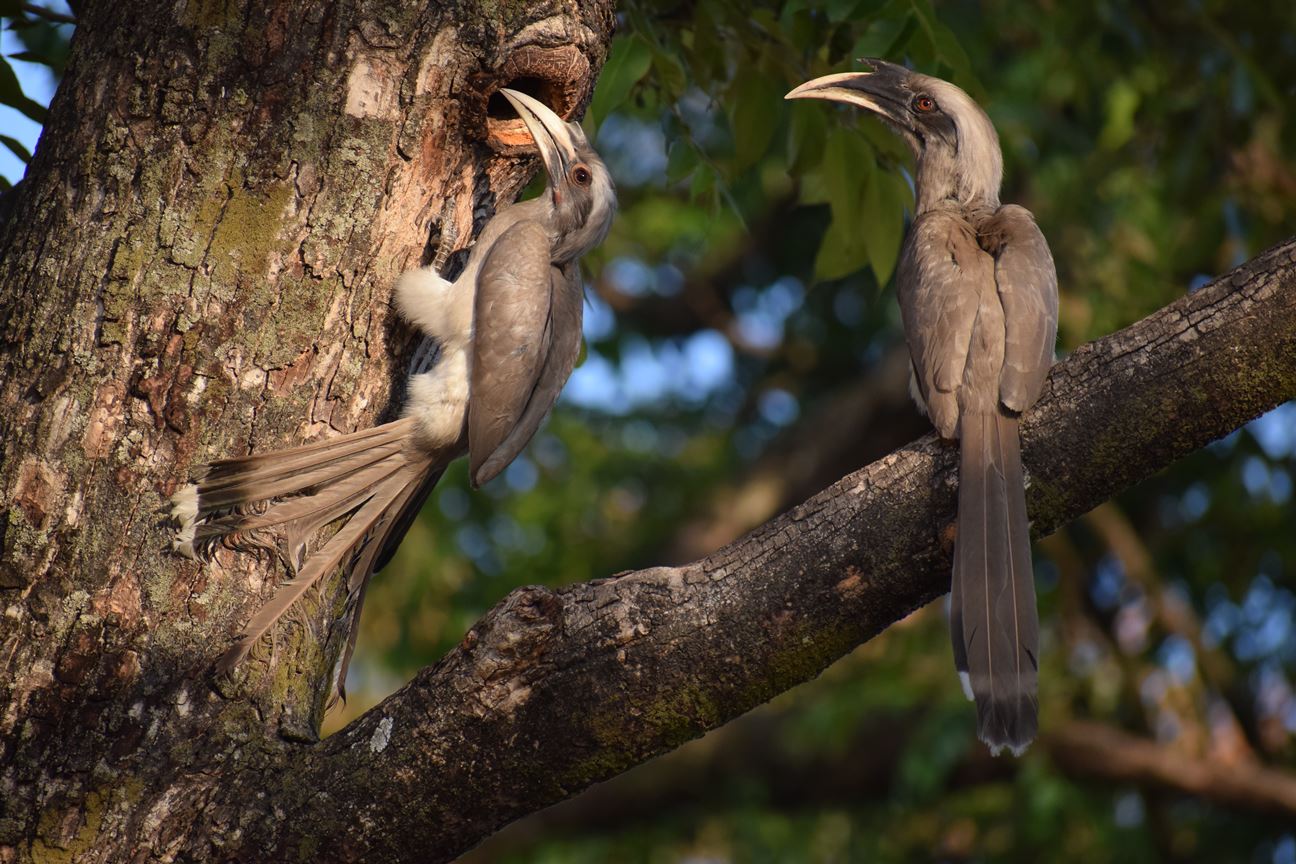
The birds are known for their greyish-brown bodies, pale brows, long tails, and light-coloured beak. The males have a larger and obvious casque above the bill than the females. They can also be identified by their distinct way of flying, which is beating wings rapidly and then gliding, or their high pitched ‘kieeeu’ or ‘kek-kek-kek’ call.
Baya Weaver
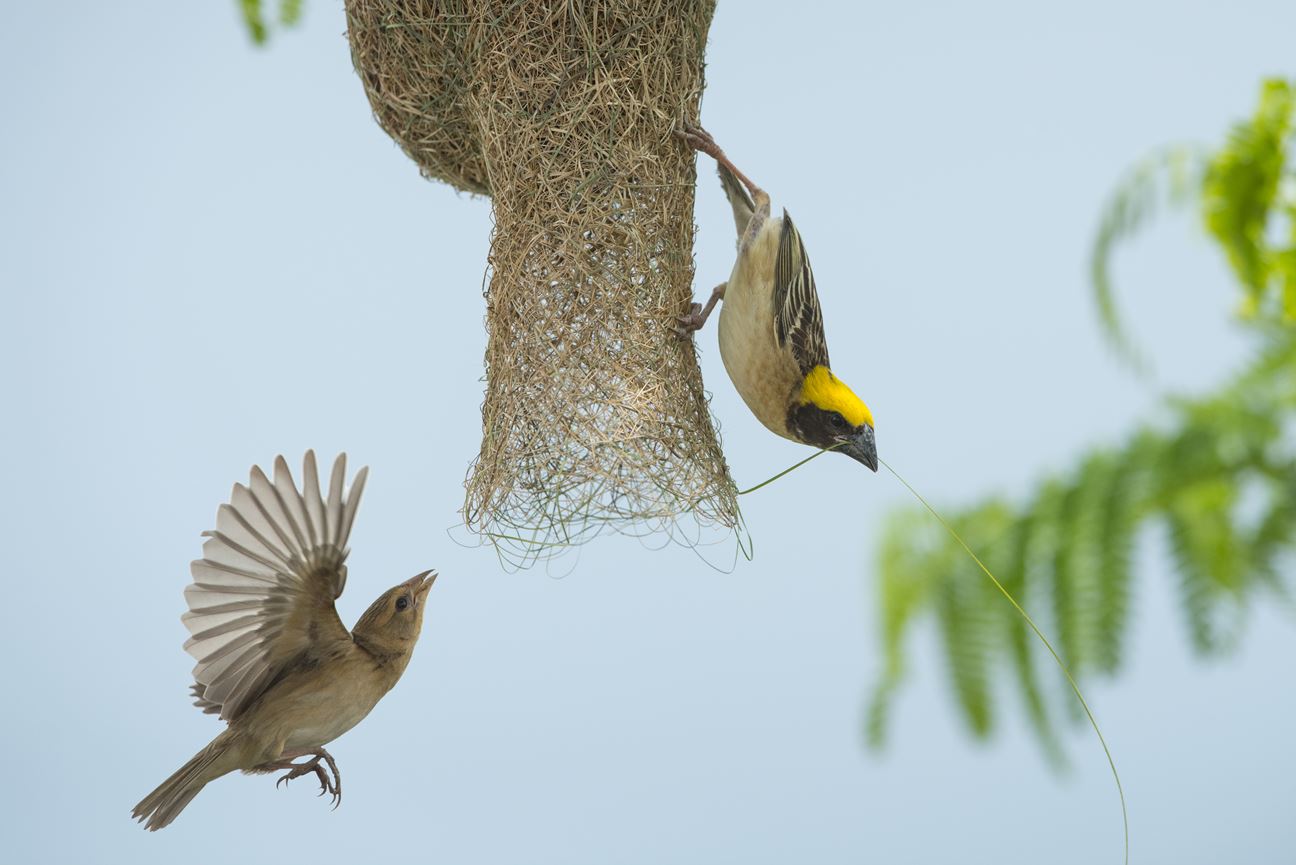
The small passerine birds are renowned for their beautiful, long and hanging nests. The breeding males have a bright yellow forehead, crown and throat; contrasting with their lighter underparts. Females are duller and have buffy colours with an obvious eyebrow. Non-breeding males look similar to the females, but without the eyebrow. These are mostly found in scrublands or grasslands. They form large flocks, especially during the breeding season.
Oriental Magpie Robin
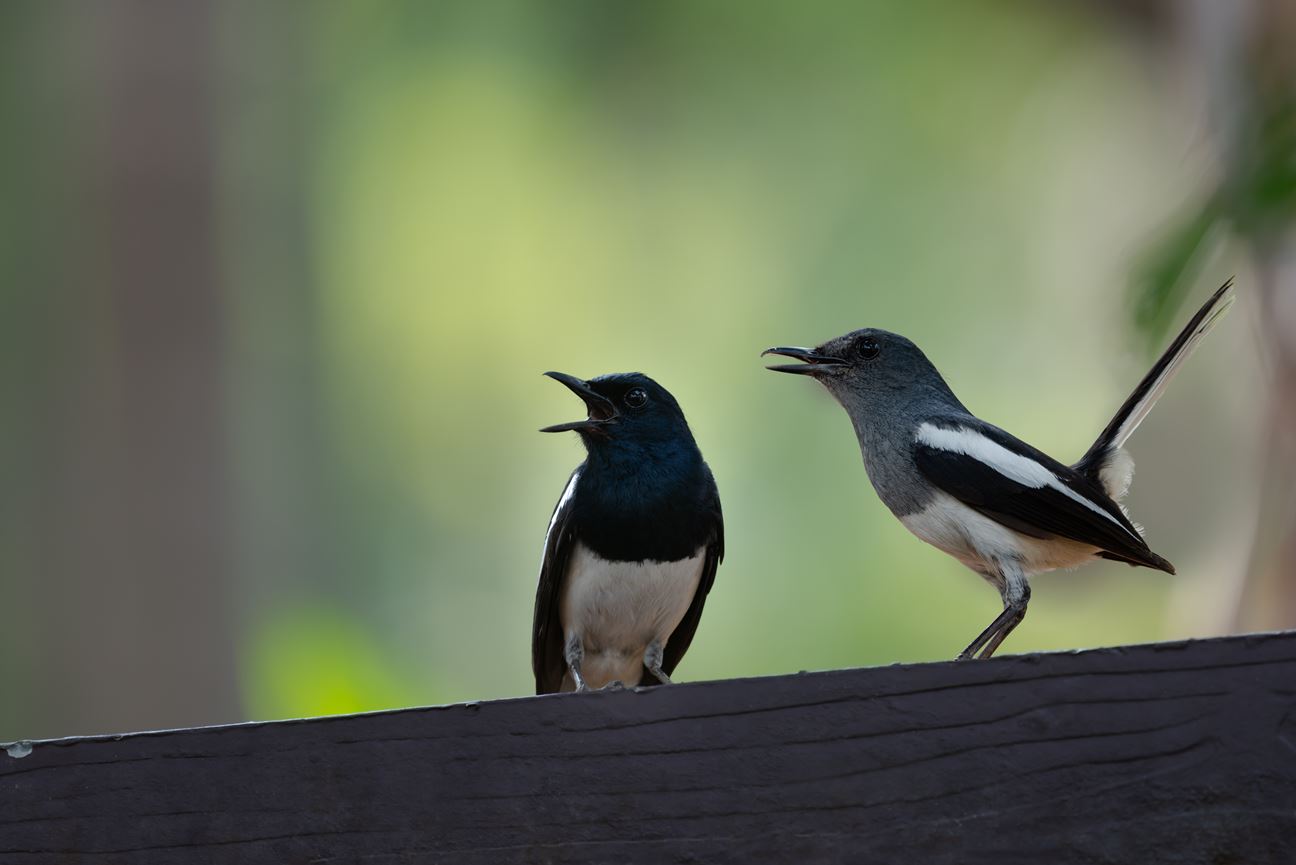
This bird can be identified by its prominent white wing marks, white underparts and longish tail. The males have a glossy blue-black body, whereas the females have a dull grey shade. These birds are very adaptable and can be heard singing in residential areas. In fact, they even build nests in manmade structures!
Coppersmith Barbet
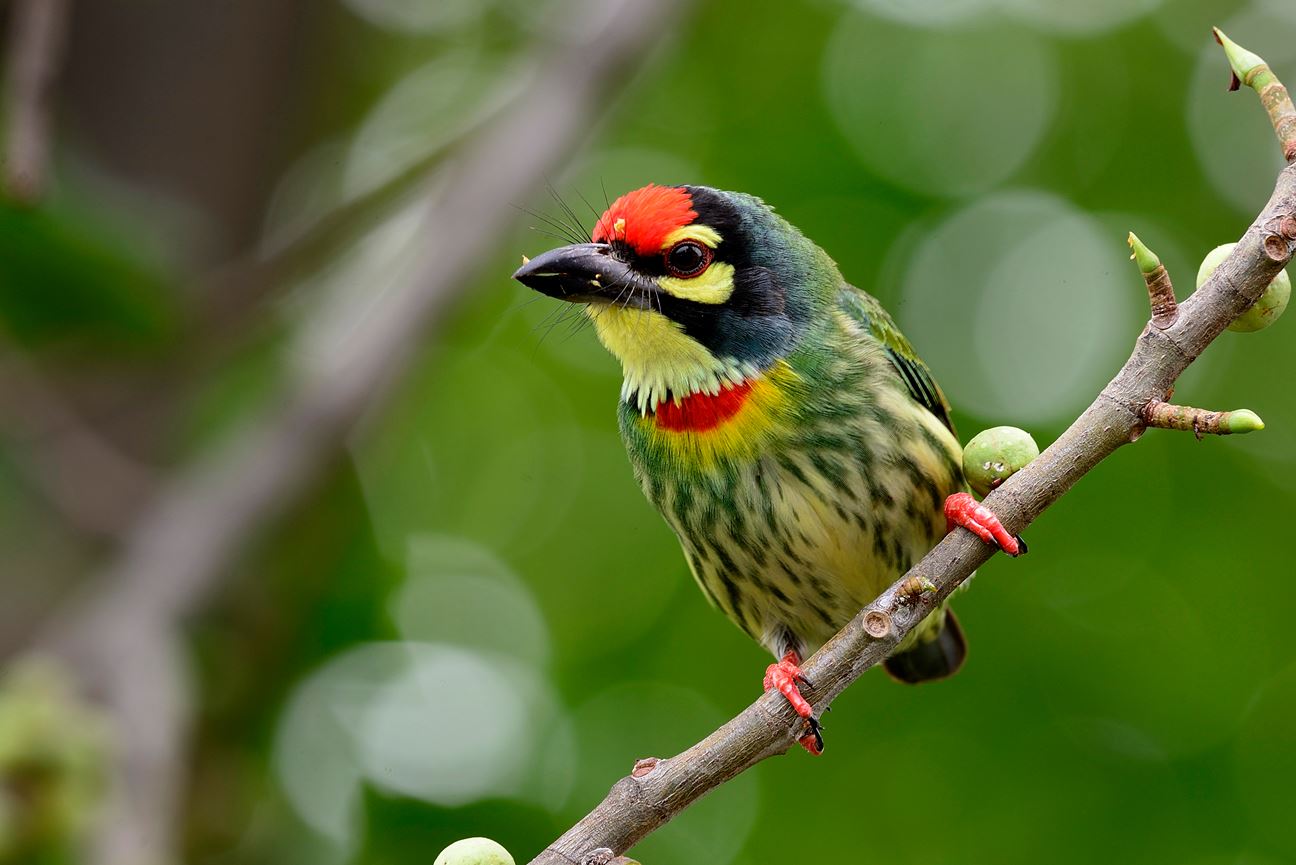
This beautifully coloured green barbet has a yellow throat, red markings on its forehead and chest, and distinct whiskers around its beak. This bright-coloured bird can still be difficult to spot but can be heard by its loud ‘tuck-tuck’ call. The call is similar to a coppersmith hitting metal, which signifies its name. It can be found in cities, gardens, and open areas feeding on fruits. It chisels holes in trees and nests in them.
Oriental White Eye

These birds can be easily spotted by their yellow and white bodies and their peculiar white eye-ring. They travel in small groups in search of nectar and insects. They live in forests as well as cities, mostly chirping happily on the trees.
Shikra
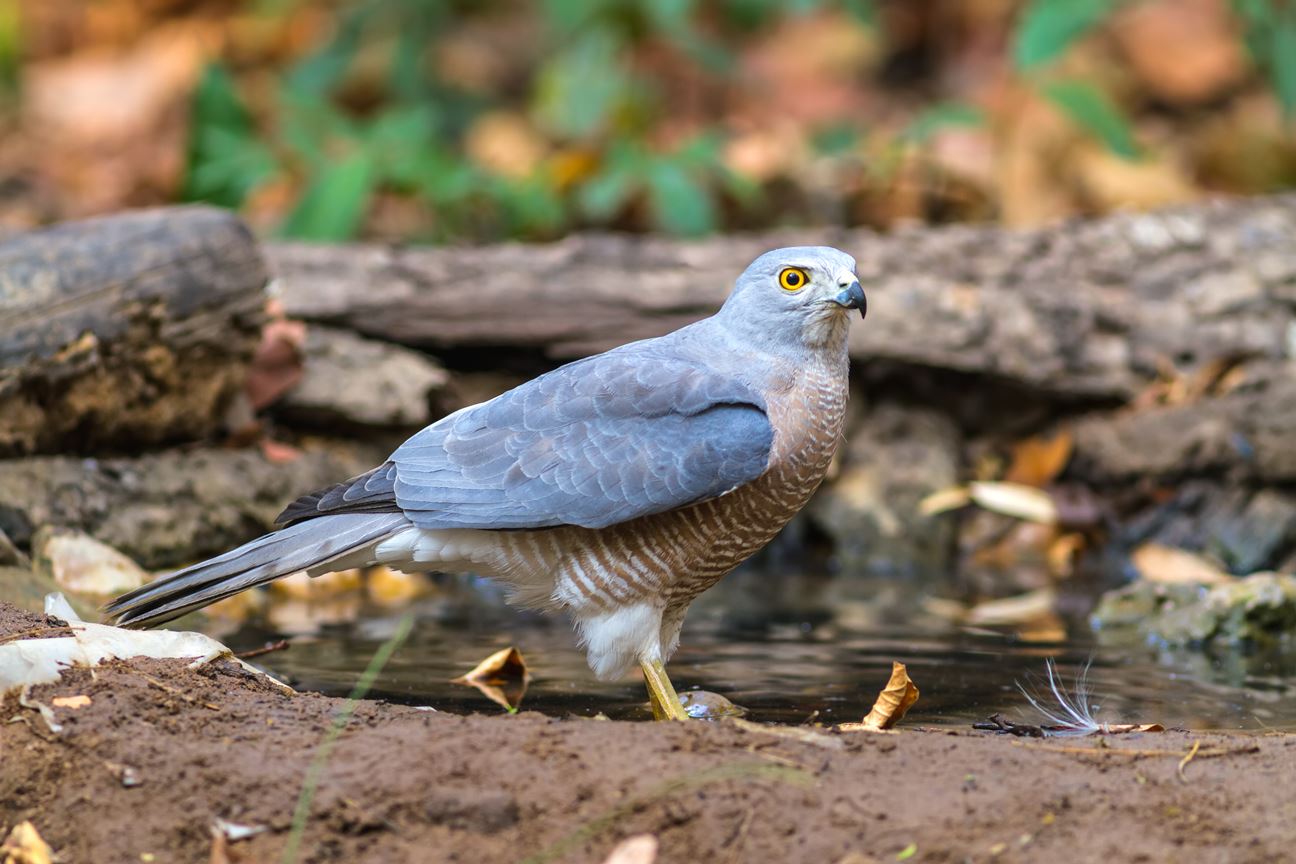
Shikra might just be the most common bird of prey found in India. Adult males have blue-grey upperparts and brownish-orange and white streaked underparts. Females feature brownish-grey upperparts. The juveniles are browner, have heavier streaked underparts, and have a barred tail. These birds feed on small birds, rodents, lizards, and dragonflies. They can be seen in open woodland areas and their nests are built in trees.
With that, here's wishing happy bird watching!